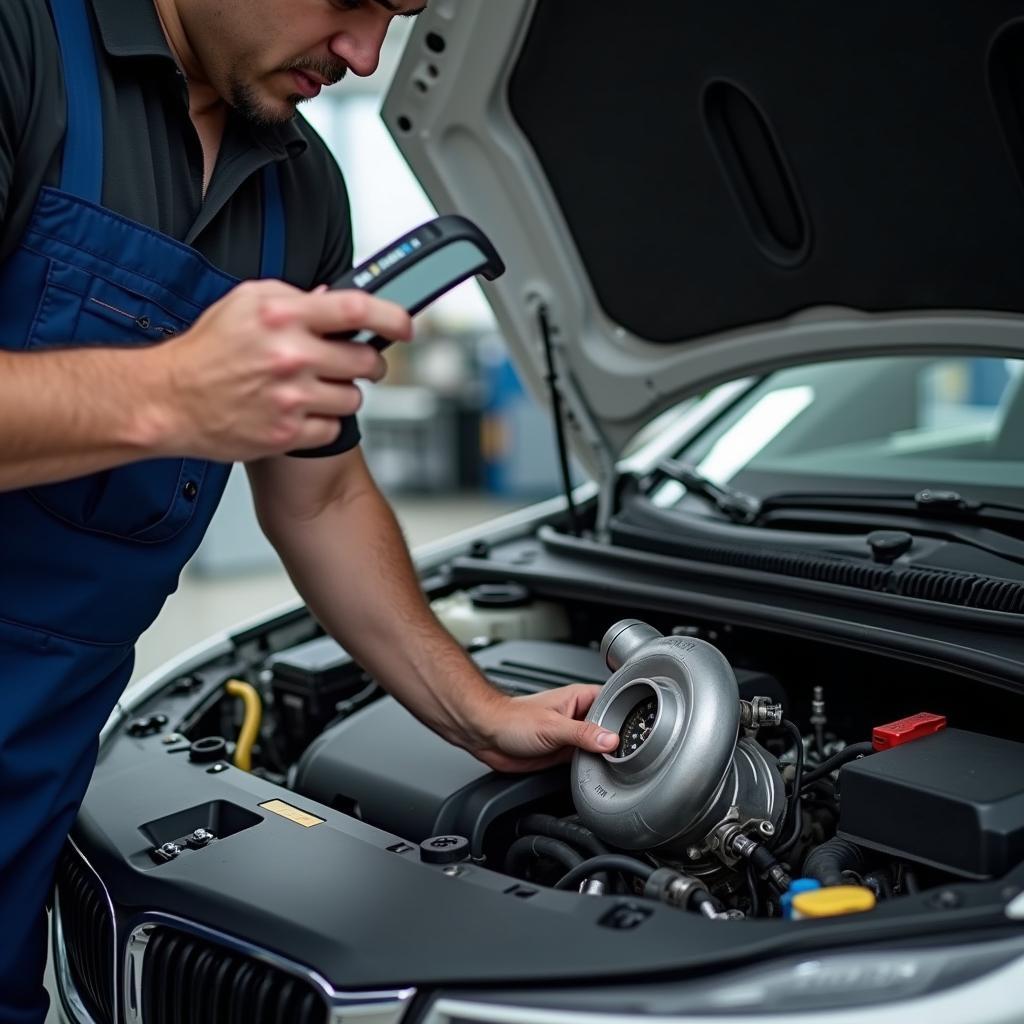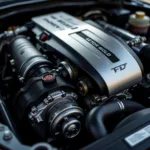The turbocharger is a core component of modern engines, providing increased performance and efficiency. A crucial part of this system is the turbocharger actuator. But what happens when it fails? What symptoms occur, and how should you react? In this article, you will find everything important about “Symptoms of a Bad Turbocharger Actuator”.
A faulty actuator on the turbocharger can lead to significant loss of performance and even engine damage. Therefore, it is crucial to recognize the signs early and take appropriate action.
What is a Turbocharger Actuator and How Does It Work?
The turbocharger actuator, also known as the boost pressure control valve, regulates the turbocharger’s boost pressure. It controls the position of the turbocharger vanes, also called Variable Turbine Geometry (VTG) control, ensuring optimal boost pressure in every driving situation. A functioning actuator is essential for the engine’s performance and efficiency.
Symptoms of a Bad Turbocharger Actuator: The Most Common Signs
A faulty turbocharger actuator manifests through various symptoms. Sometimes they are subtle, sometimes clearly noticeable. Here are the most common signs:
- Loss of power: The car accelerates slower and does not reach its usual top speed.
- Limp mode: The engine goes into limp mode, and performance is drastically reduced.
- Unusual noises: Whistling, hissing, or rattling sounds from the engine bay can indicate a faulty actuator.
- Hesitation when accelerating: The engine stutters or hesitates when accelerating.
- Increased fuel consumption: A faulty actuator can lead to higher fuel consumption.
- Error messages: The check engine light may illuminate, and a trouble code for the turbocharger actuator is stored in the fault memory.
Causes of a Faulty Turbocharger Actuator
The causes of a faulty actuator can be manifold. These include:
- Wear and tear: Like any mechanical component, the actuator is subject to natural wear and tear.
- Carbon buildup: Deposits in the turbocharger can impair the actuator’s function.
- Electrical problems: Faulty cables or sensors can disable the actuator.
- Mechanical damage: External influences like stone chips can damage the actuator.
What to Do If You Suspect a Faulty Turbocharger Actuator
If you suspect a faulty turbocharger actuator, you should immediately visit a workshop. “Early diagnosis can prevent further damage to the turbocharger and engine,” says Dr. Franz Müller, an expert in vehicle technology and author of the book “Turbochargers: Function, Diagnosis, and Repair”.
 Mechanic diagnosing a turbocharger actuator in a workshop
Mechanic diagnosing a turbocharger actuator in a workshop
Preventive Measures
Regular maintenance and inspections can help extend the lifespan of the turbocharger actuator. Using high-quality oil and driving gently can also help prevent problems.
Symptoms of a Bad Turbocharger Actuator: Summary and Recommendation
A faulty turbocharger actuator can lead to various symptoms, from loss of power to unusual noises. If you suspect a defect, a workshop should be visited immediately. This can prevent further damage and restore the engine’s full performance. Don’t hesitate to contact us at AutoRepairAid, our experts are available 24/7.
Related Questions and Topics
- Turbocharger whistling: Causes and solutions
- Cleaning a turbocharger: How to do it
- Replacing a turbocharger: Cost and process
Visit our website autorepairaid.com for more helpful tips and information about car repair.
 Expert repairing a turbocharger actuator
Expert repairing a turbocharger actuator
Contact Us!
Having trouble with your turbocharger? Need professional help? Contact us now at autorepairaid.com! Our car repair experts are ready to assist you.
